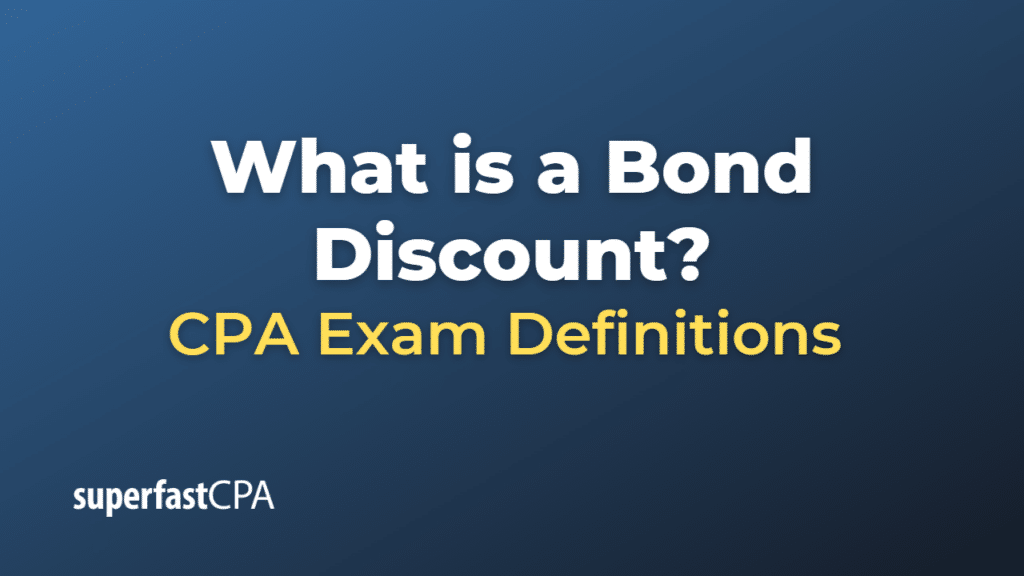Bond Discount
A bond discount refers to the difference between a bond’s face value (also known as par value) and its current market price when the bond is trading below its face value. A bond may trade at a discount for various reasons, such as changes in interest rates, the issuer’s creditworthiness, or market conditions.
When market interest rates rise, the prices of existing bonds with fixed coupon rates tend to fall because newer bonds issued at higher rates become more attractive to investors. As a result, the prices of existing bonds decrease to offer a yield that’s competitive with the prevailing market rates. Similarly, if the issuer’s credit rating is downgraded or its financial position deteriorates, the perceived risk of the bond increases, leading to a lower price and a higher yield to compensate investors for the additional risk.
When a bond is purchased at a discount, the bondholder will still receive the bond’s full face value at maturity, assuming the issuer does not default. Additionally, the bondholder will receive periodic interest payments based on the bond’s coupon rate throughout the bond’s term. The difference between the discounted purchase price and the face value represents a capital gain for the bondholder at maturity.
It is important to note that the bond discount should not be confused with the term “discount bond.” A discount bond is a type of bond that does not pay periodic interest payments (like a zero-coupon bond) and is issued at a price lower than its face value. Instead, the bondholder receives the bond’s face value at maturity, with the difference between the purchase price and face value representing the interest earned on the bond.
Example of a Bond Discount
Let’s consider a hypothetical example of a bond trading at a discount.
Suppose there is a 5-year corporate bond issued by “Retail Corp.” with a face value of $1,000 and a 4% annual coupon rate, paying interest semiannually. The bond was initially issued at par when market interest rates were also 4%.
Now, imagine that market interest rates have risen to 5% after two years since the bond was issued. Investors would prefer to buy new bonds offering a 5% annual coupon rate rather than the existing bond from Retail Corp. with a 4% coupon rate. As a result, the price of the Retail Corp. bond falls to make it more attractive and to bring its yield in line with the prevailing market rates.
Assuming the bond is now trading at a price of $950, this represents a bond discount of $50 ($1,000 face value – $950 current price). If an investor purchases the bond at this discounted price, they will still receive the bond’s full face value of $1,000 at maturity, as well as the periodic interest payments based on the 4% coupon rate throughout the remaining three years of the bond’s term. The $50 difference between the purchase price and the face value represents a capital gain for the bondholder at maturity, in addition to the interest income from the coupon payments.
In this example, the bond’s discount reflects the changes in market interest rates and the need for the bond’s yield to be competitive with new bond issuances.













